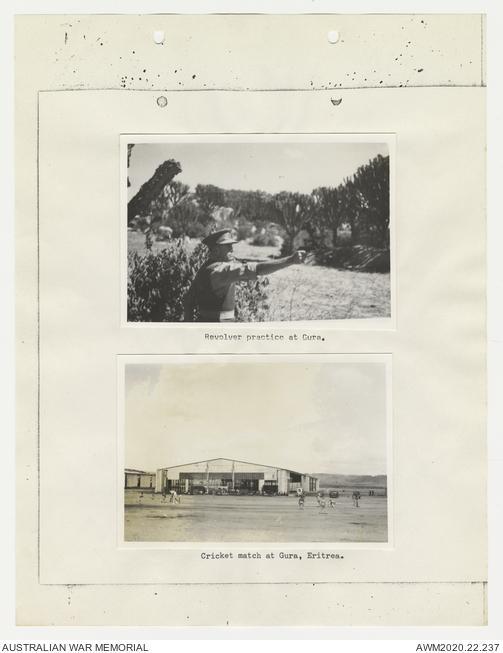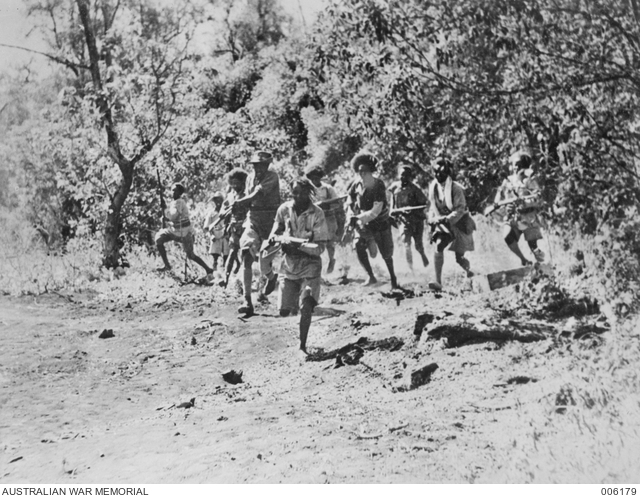“… the direction is inevitable”
The Australian War Memorial is pleased to present one of the treasures of the Australian War Memorial in digitised form: a map donated by Australian author Patrick White.
Australia’s only Nobel Laureate for Literature, White was commissioned in the Royal Air Force Volunteer Reserve in 1940, and was assigned to the Administrative and Special Duties Branch. He served as an intelligence officer in North Africa, the Middle East and Greece, achieving the rank of acting squadron leader. During his service, White met his life partner, Manoly Lascaris, and planned the novel Voss.
Mr White donated the map in 1989, noting that it was likely that he acquired it during his posting at RAF HQ in Khartoum, his first posting in the Middle East.
The map of Gondar, Ethiopia, prepared by patriot forces in Ethiopia, marks Italian and fascist forts, gun emplacements, airfields, and landmarks. It is difficult to accurately date, although it seems likely that it predates the liberation of Gondar in November 1941.
Ethiopia is an often overlooked theatre of the Second World War.
Fascist Italy invaded Ethiopia from Eritrea and Italian Somalia in October 1935. In May 1936, Italy proclaimed the annexation of Ethiopia and Victor Emmanuel III was proclaimed emperor. Ethiopian emperor Haile Selassie I went into exile in the United Kingdom.
After Italy declared war on Britain and France in June 1940, Italian forces attacked British and Commonwealth forces in Egypt, Sudan, Kenya and British Somaliland. The resulting East Africa Campaign saw troops from across the British Commonwealth join with Allied colonial powers in the region and Ethiopian guerrillas to oppose the Italians in East Africa.
There was some Australian involvement in the East Africa campaign. HMAS Hobart assisted in the evacuation at Berbera in British Somaliland. In September 1941, Australian medical units were deployed to the region to support Commonwealth and Ethiopian forces, including a mobile surgical unit led by Captain Eric Goulston.
The map of Gondar donated by Mr White may have been created as a target map for airstrikes by members of the mixed force which captured Gondar at the end of November 1941. The force consisted of units from the 12th African Division, Ethiopian irregulars and other Commonwealth units. The 17th century fortress-city of Fasil Ghebbi, the final stronghold of the Italian colonisers, is prominently marked on the map as “Fasil’s Building”. Gondar was the last Ethiopian city to fall to the Allies. Its fall signalled the end of organised Italian resistance in the region, although groups of Italian soldiers waged a guerrilla campaign for the next two years.
Lieutenant A.H. Brown of Cremorne NSW, with Sergeants W.R. Howell, R.C. Wood, E.M. Body and J.K. Burke resting with Abyssinian soldiers, c.1941 041693

Revolver practice and cricket match in Eritrea,1941 PR05571
Further Reading
An Improvised War: The Ethiopian Campaign, 1940–1941, Michael Glover
A History of Abyssinia, A.H.M. Jones and E. Monroe
Mission One Hundred and One, Duncan McNab
Vanguard of Victory: A Short Review of the South African Victories in East Africa - 1940-1941, Conrad Norton & Uys Krige
The Fall of Italian East Africa, Eric Rosenthal
Ethiopia Under Hailae Selassiae, Christine Sandford
The Abyssinian Campaigns: The Official Story of the Conquest of Italian East Africa, Ministry of Information, Great Britain


